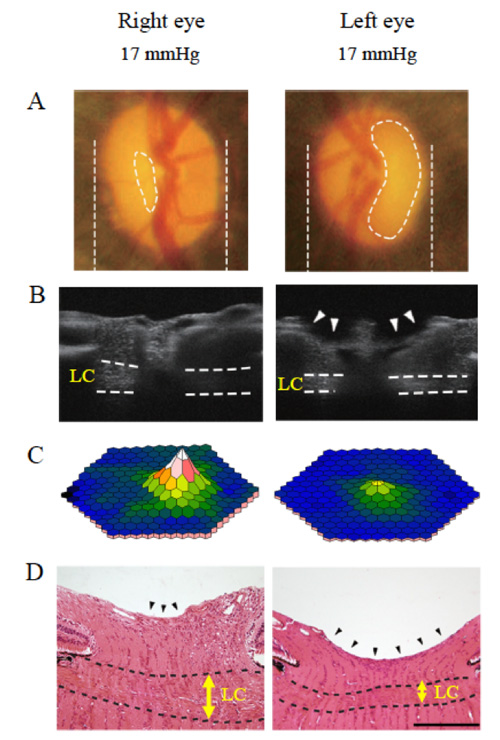
HOME > Topics2019 > 16 October 2019
16 October 2019
Takahiko Noro (Visual Research Project) published a paper on glaucoma-like degeneration of the visual system in aged marmosets in Scientific Reports
Aged marmosets develop normal tension glaucoma like humans
~Progress in glaucoma research by introducing an animal model closer to humans~
Summary
Glaucoma is the second leading cause of blindness in the world. Generally, scientists use murine models of glaucoma, but for future experiments and development of novel therapies, better animal models that are closer to humans are required. A collaborative research conducted at Tokyo Metropolitan Institute of Medical Science, Central Institute for Experimental Animals, and the Jikei University School of Medicine has discovered that 10% of aged common marmosets (Callithrix jacchus) develop normal tension glaucoma and show several clinical and pathological features that are similar to glaucoma patients.
- <Title of the paper>
- Normal tension glaucoma-like degeneration of the visual system in aged marmosets.
- <Journal>
- Scientific Reports
DOI: 10.1038/s41598-019-51281-y
https://www.nature.com/articles/s41598-019-51281-y
Details
The common marmoset is a non-human primate that provides valuable models for neuroscience and aging research due to its anatomical similarities to humans and relatively short lifespan. In this study, Noro et al. examined the eyes of aged marmosets and found that 10% of them showed glaucoma-like optic nerve cupping, thinning of the lamina cribrosa, and impaired visual function, while maintaining normal intraocular pressure (IOP) (Figure). Glaucoma is caused by multiple factors, and it is usually associated with elevated IOP. However, there is a subtype of glaucoma termed normal tension glaucoma, which is not accompanied by high IOP. Recent studies have reported that the ratio of normal tension glaucoma vs. high IOP glaucoma is much higher than previously assumed in many countries. These marmosets may serve as a good model for normal tension glaucoma.
The lamina cribrosa is one of the key structures involved in glaucoma that is absent in mice, suggesting that use of marmosets could provide great value in glaucoma research. Marmosets with glaucoma-like features demonstrated the atrophy of the visual cortex in brain like glaucoma patients. In addition, we found that blood flow of the ophthalmic artery and trophic factor expression in the optic nerve head were decreased, whereas the oxidative stress level was increased in the retina and blood of the glaucoma marmosets; these features are also observed in glaucoma patients.
Thus, our findings suggest that marmosets have potential to provide useful information for eye research, which may lead to development of novel drugs and strategies to cure ophthalmic diseases including glaucoma.

Figure : A 12 years-old female marmoset presenting with normal tension glaucoma-like phenotypes.
This aged marmoset showed normal intraocular pressure in both eyes, but large optic disc cupping (dotted line in A; arrowheads in B and D), thinning of the lamina cribrosa (LC; dotted lines in B and D), and decreased visual function (C) were observed only in the left eye.
A: ocular fundus picture, B: optical coherence tomography, C: multifocal electroretinogram, D: hematoxylin and eosin staining.

